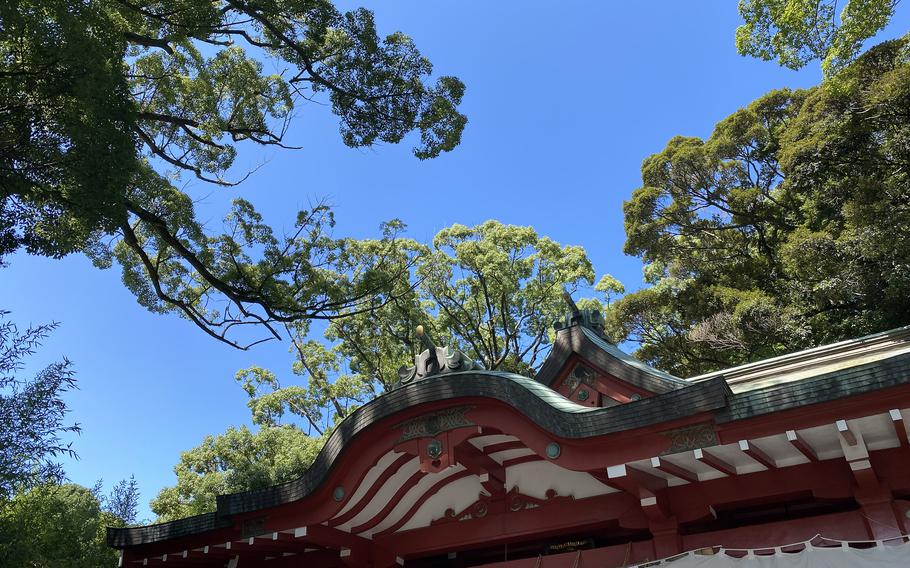
The sacred camphor tree at Kinomiya Shrine in Atami is one of Japan’s largest and oldest camphor trees. (Aaron Kidd/Stars and Stripes)
A living relic of history stands in a quiet corner of a Japanese seaside town, its thick gnarled branches stretching skyward as if whispering secrets to the breeze.
The sacred camphor tree at Kinomiya Shrine in Atami is no ordinary timber. Estimated to be more than 2,000 years old, it is one of Japan’s largest and oldest camphor trees — a towering guardian of time, deeply entwined with local lore and spiritual tradition.
A 20-minute walk from Atami Station, the shrine is a peaceful oasis removed from the city’s hot-spring hotels and bustling boardwalk. The grounds are shaded by ancient foliage — a 1,300-year-old tree guards the entrance’s torii gate — but nothing commands attention like the ancient camphor.
With a circumference of more than 78 feet and standing 85 feet tall, its sheer size is awe-inspiring. According to legend, walking around the tree’s base once grants an extra year of life, while circling it in meditative silence is said to bring good fortune.
The air beneath its dense canopy feels different — cooler, calmer and charged with a quiet energy. Many visitors pause to lay a hand on its moss-covered trunk, seeking a moment of connection with something from the distant past.
While Atami is famous for its ocean views and steaming onsen baths, a visit to this special tree offers a different kind of rejuvenation.

Kinomiya Shrine in Atami, Japan, is a peaceful oasis removed from the city’s hot-spring hotels and bustling boardwalk. (Aaron Kidd/Stars and Stripes)
On the QT
Directions: It’s a 20-minute walk from Atami Station to the shrine at 43-1 Nishiyamacho, Atami, Shizuoka 413-0034.
Times: Open 24/7.
Costs: Free
Food: An onsite teahouse serves a variety of snacks and beverages.
Information: 0557-82-2241